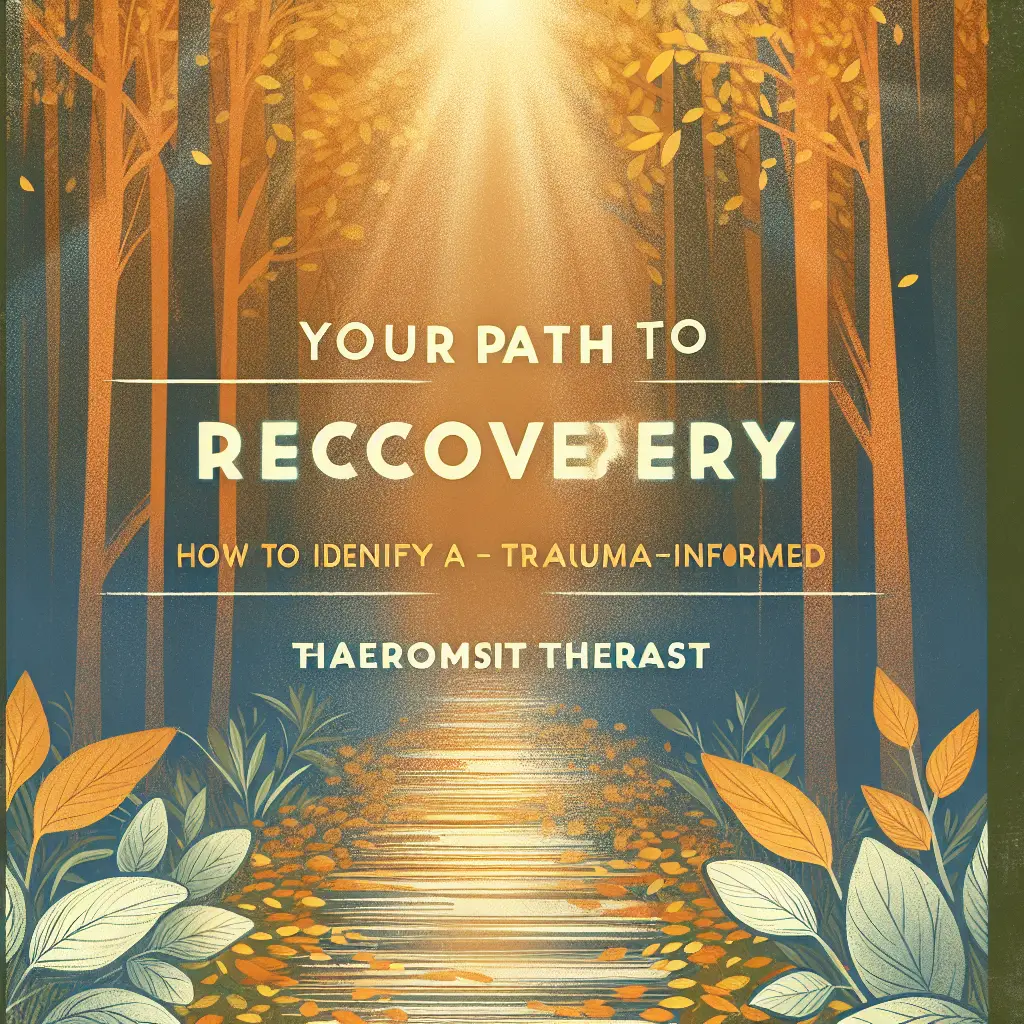
Your Path to Recovery: How to Identify a Trauma-Informed Therapist for Lasting Healing
Introduction
In an increasingly complex world, more individuals are grappling with trauma. From childhood adversity to experiences of violence, the roots of trauma are multifaceted. The significance of finding the right therapist cannot be overstated; it can mean the difference between a winding path of repeated struggles and a transformative journey toward healing. Today, we will explore Your Path to Recovery: How to Identify a Trauma-Informed Therapist—a guide designed to help you recognize what makes a therapist truly trauma-informed and how these professionals can pave the way for your healing journey.
Understanding Trauma and Its Impact
What Is Trauma?
Trauma refers to the emotional, psychological, and physical effects that result from distressing events, including accidents, abuse, neglect, or loss. These experiences can lead to long-lasting consequences like anxiety, depression, and complex post-traumatic stress disorder (PTSD).
The Importance of Trauma-Informed Care
Trauma-informed care acknowledges the presence of trauma symptoms and the impact it can have on an individual’s life. Practitioners who are trauma-informed recognize how trauma affects a person’s ability to engage in therapy and prioritize avoiding re-traumatization. They create a safe environment conducive to healing.
Key Characteristics of a Trauma-Informed Therapist
-
Safety and Trustworthiness: Establishing a safe therapeutic environment is paramount. A trauma-informed therapist will ensure physical and emotional safety, fostering trust through transparency and consistency.
-
Empowerment and Collaboration: Effective therapy involves a partnership where clients are empowered to take an active role. A trauma-informed therapist encourages self-efficacy and respects each client’s unique experiences and choices.
-
Cultural Sensitivity: Acknowledging and being sensitive to cultural differences is critical in trauma-informed care. A skilled therapist understands the nuances of culture and how it intersects with trauma.
-
Understanding the Impact of Trauma: A trauma-informed therapist recognizes the psychological and emotional impact of trauma and tailors approaches accordingly.
- Integrating Different Modalities: Trauma-informed therapists often employ various therapeutic modalities, such as cognitive-behavioral therapy, mindfulness, and somatic therapies, to address the diverse needs of their clients.
Steps to Identify a Trauma-Informed Therapist
1. Research and Referrals
Begin by conducting thorough research. Ask friends, family, or healthcare providers for recommendations. Utilize online directories that specialize in mental health professionals to find therapists skilled in trauma-informed care.
2. Review Credentials and Specializations
Check the therapist’s credentials. Certifications in trauma therapy, such as EMDR, somatic experiencing, or trauma-focused cognitive-behavioral therapy, are excellent indicators of expertise.
| Credential Type | Description |
|---|---|
| EMDR Certification | Eye Movement Desensitization and Reprocessing |
| Somatic Experiencing Training | Focuses on the body’s responses to trauma |
| Trauma-Focused CBT | Cognitive-behavioral techniques tailored for trauma |
3. Schedule a Consultative Session
Most therapists offer initial consultations. Use this opportunity to assess their approach. Ask specific questions about their experience with trauma and their therapeutic methods.
4. Evaluate Compatibility
It’s essential to feel comfortable with your therapist. Trust your instincts. If something feels off, don’t hesitate to seek another professional. A solid therapeutic alliance is crucial for effective treatment.
5. Ongoing Assessment
Therapy is a dynamic process. Regularly assess your progress and feelings toward the therapist. It’s okay to discuss concerns or discomforts as you navigate your path to recovery.
Case Studies
Case Study 1: The Journey of Sarah
Sarah, a trauma survivor from childhood abuse, struggled with depression and anxiety as an adult. When searching for therapy, she found a trauma-informed therapist through a referral. During their initial consultation, the therapist prioritized creating a safe space and explaining their approach to trauma.
Analysis: Sarah’s choice to prioritize a trauma-informed therapist led to her feeling heard and validated, which significantly contributed to her healing journey.
Case Study 2: Mark’s Experience
Mark lost his partner in a tragic accident and was deeply affected emotionally and psychologically. Initially hesitant about therapy, he sought the help of a trauma-informed therapist who specialized in grief counseling. This therapist used mindfulness techniques to help Mark process his emotions.
Analysis: Mark’s story emphasizes the significance of understanding trauma’s nuances, where specialized care made a difference in his recovery process.
Tools and Techniques Employed by Trauma-Informed Therapists
-
Mindfulness and Grounding Techniques: To manage anxiety and enhance present-moment awareness.
-
Trauma Narrative: Encouraging clients to weave their trauma experiences into a narrative builds coherence and integration.
- Somatic Experiencing: A technique focusing on bodily sensations to release trauma stored in the body.
Conclusion
Your journey toward recovery begins with the right guidance. Understanding Your Path to Recovery: How to Identify a Trauma-Informed Therapist equips you with the tools necessary to make informed decisions about treatment. Remember, healing is a process, and finding a therapist who respects your experience and fosters a therapeutic relationship is vital. Empower yourself with knowledge, seek the support you deserve, and open yourself to the possibility of profound healing.
FAQs
-
How can I confirm that a therapist is trauma-informed?
Check their credentials, specializations, and ask direct questions about their approach during the initial session. -
What should I expect during the first therapy session?
Expect a focus on building rapport, discussing your concerns, and exploring how the therapist can support your recovery. -
Is it okay to switch therapists?
Yes, it’s crucial to feel comfortable. If the fit isn’t right, seeking another therapist is a healthy choice. -
Can I find trauma-informed therapists online?
Yes, many directories specialize in connecting individuals with trauma-informed therapists in various locations. - What if therapy feels overwhelming?
Communicate with your therapist about your feelings. They can help you navigate any discomfort and adjust the therapeutic approach as needed.
Your path to recovery starts with understanding your unique needs and finding the support that resonates with your experiences. Embrace the journey, and let healing unfold.















